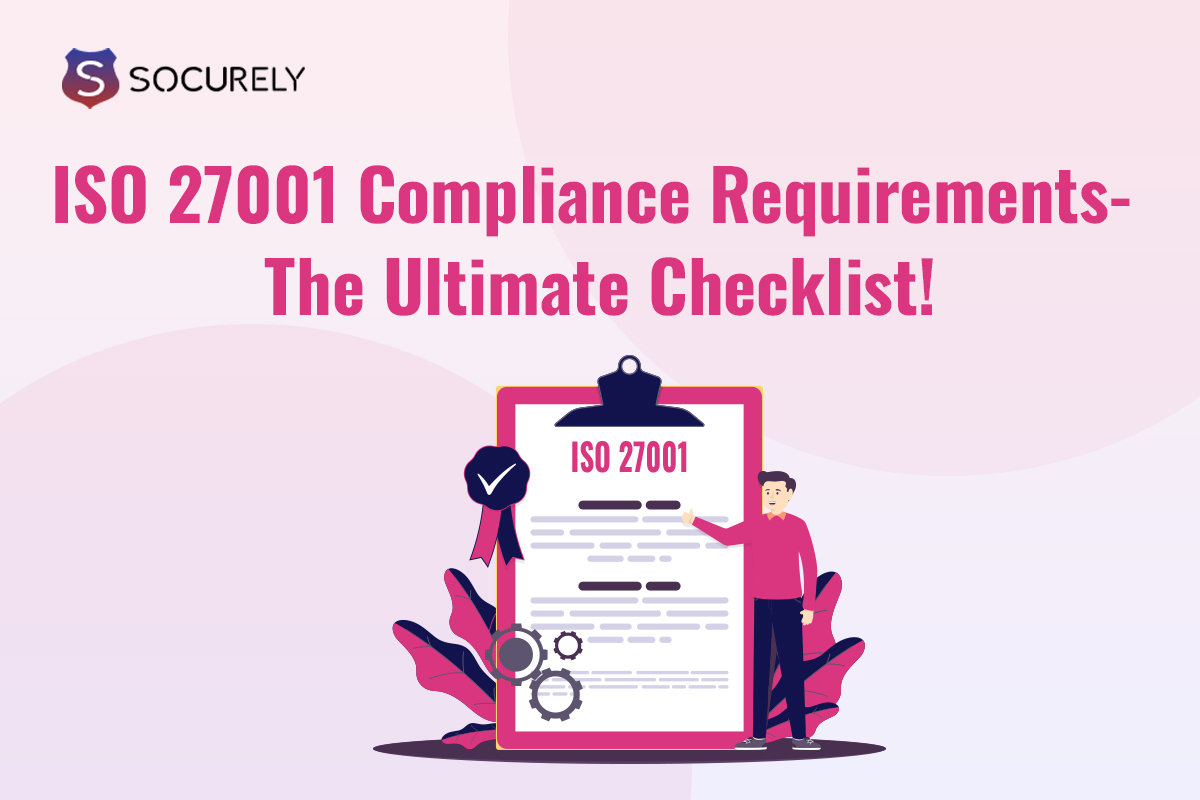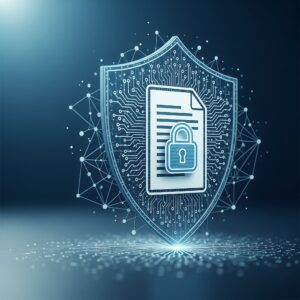Data breaches are an increasing concern, with 39% of UK businesses experiencing cyber-attacks in the last few years. To combat this, organizations must adopt robust security frameworks. ISO 27001, an international standard for information security, provides a structured approach to managing sensitive information.
However, to date, many businesses are not aware of how to augment the ISO 27001 Framework. It takes knowledge of the ISO 27001 standard, careful planning, and dedicated execution to comply with ISO 27001. A business should focus on the prerequisites for ISO 27001 certification to expedite the procedure.
Also, the ISMS policies and processes prove conformity with the clauses (4–10) mentioned in the ISO 27001 compliance framework, covered in the ISO 27001 requirements. Once you know the implementation, ISO 27001 requirements ensure your organization’s data remains secure and resilient against threats by understanding the scope of your business.
So, let us walk you through everything you need to know about ISO 27001 compliance requirements and how to achieve them effectively.
What Are The ISO 27001 Requirements?
Information Security Management Systems (ISMS) are outlined in ISO 27001, which describes a comprehensive set of requirements for their establishment, implementation, maintenance, and continuous improvement (ISMS). The core objective of these requirements is to safeguard information assets and ensure that your business information security management is well aligned with its business goals and compliance obligations.
ISO/IEC 27001 Requirements help your business build the roadmap for a comprehensive and effective ISMS and internal ISO 27001 Audit program. These requirements give your business the strength required to secure and comply with regulatory requirements.
List Of ISO 27001 Compliance Requirements
ISO 27001 requirements are the Clauses that are listed from 4-10 under the compliance framework.
Below is a detailed list of the requirements, each of which plays a crucial role in ensuring the integrity, confidentiality, and availability of your information assets.
*Clause 4: Context of the Organisation
To establish a robust ISMS, you first need to understand the context in which your organization operates:
- Internal and External Issues: Identify and document internal and external factors that can impact the ISMS. This includes market conditions, regulatory requirements, and organizational culture.
- Interested Parties: Determine the needs and expectations of stakeholders such as customers, employees, suppliers, and regulators.
- Scope of the ISMS: Define the boundaries and applicability of the ISMS, considering the identified internal and external issues and the requirements of interested parties.
*Clause-5- Leadership & Commitment
Strong leadership and commitment from top management are essential for the success of the ISMS:
- Leadership Commitment: Demonstrate commitment to the ISMS by ensuring it aligns with the organization’s strategic direction, integrating it into business processes, and providing necessary resources.
- Information Security Policy: Develop and implement an information security policy that provides a clear direction for the ISMS. The policy should be communicated to all employees and stakeholders.
- Roles, Responsibilities, and Authorities: Assign clear roles and responsibilities for information security within the organization, ensuring that these are understood and followed.
*Clause-6- Planning For Risk Management
Effective planning is crucial to address risks and opportunities related to information security:
- Risk Assessment: Identify information security risks by evaluating potential threats and vulnerabilities. Determine whether these risks are likely to occur and how they might affect your business.
- Risk Treatment Plan: Develop and implement plans to mitigate identified risks. This may involve applying specific security controls or taking other preventive measures.
- Information Security Objectives: Establish measurable information security objectives that are aligned with the organization’s strategic goals. Develop plans to achieve these objectives.
*Clause 7- Planning & Support
Supporting the ISMS involves providing adequate resources and ensuring competence:
- Resources: Allocate necessary resources, including financial, technical, and human resources, to implement and maintain the ISMS.
- Competence: Ensure that employees involved in the ISMS are competent, with the necessary skills, knowledge, and experience. Provide regular training and professional development opportunities.
- Awareness: Raise awareness about information security policies, procedures, and objectives among all employees. Ensure they understand their role in protecting information assets.
- Communication: Establish effective communication channels to share information about the ISMS with internal and external stakeholders.
- Documented Information: Maintain and control documented information required by ISO 27001 to ensure consistency and traceability. This includes policies, procedures, records, and other relevant documents.
*Clause-8- Regular Assessment & Operation
The operational phase involves implementing the plans and controls designed to manage information security risks:
- Operational Planning and Control: Plan, implement, and control the processes needed to meet information security requirements. Ensure that these processes are well-documented and consistently followed.
- Risk Treatment: Apply the risk treatment plans developed in the planning phase. This involves implementing specific security controls to mitigate identified risks.
- Document Control: Manage and control documented information to ensure it is accurate, up-to-date, and accessible to those who need it.
*Clause-9- Performance Evaluation
Regular evaluation of the ISMS is necessary to ensure its effectiveness and identify areas for improvement:
- Monitoring and Measurement: Measure and monitor the effectiveness of the ISMS continuously. It can be performed by tracking progress against information security objectives and assessing the effectiveness of security controls.
- Internal Audits: Conduct regular internal audits to evaluate the ISMS’s compliance with ISO 27001 requirements. Audits should be planned, objective, and impartial.
- Management Review: Top management should review the performance of the ISMS at planned intervals. This review should consider audit results, feedback from stakeholders, and the achievement of information security objectives.
*Clause- 10- Improvement
ISO 27001 emphasizes continuous improvement:
- Non-conformities and Corrective Actions: Identify and address non-conformities in the ISMS. Take corrective actions to prevent recurrence and improve the overall effectiveness of the ISMS.
- Continual Improvement: Proactively seek opportunities to improve the ISMS. This may involve adopting new technologies, updating policies and procedures, or enhancing employee training programs.
By adhering to these detailed requirements, your organization can establish a robust ISMS that not only meets ISO 27001 standards but also enhances overall information security, builds customer trust, and supports business objectives.
Also Read How To Get ISO 27001 Compliance Certification, Here!
Why Is ISO 27001 Compliance Important?
Transitioning from manual security processes to a robust framework like ISO 27001 offers numerous benefits:
- Robust Security: Get accurate protection against all data breaches and cyber threats.
- Customer Trust: Demonstrates commitment to data protection.
- Regulatory Compliance: Helps meet legal and regulatory requirements.
- Operational Efficiency: Promotes a systematic approach to managing information security.
- Competitive Advantage: Sets you apart from competitors.
Also, get the ISO 27001 Certification for better & secured benefits!
Read the process of implementing ISO 27001 Certification for your business.
How ISO 27001 Compliance Annex A Control Relates To ISO 27001 Requirements?
Annex A of ISO 27001 lists 114 controls structured into 14 domains. These controls help to mitigate risks identified during the risk assessment process. An ISO 27001 Auditor uses Annex A as a benchmark to get the policies and 114 controls of this framework.
The domains of the ISO 27001 Framework include areas such as asset management, access control, and information security incident management. Implementing these controls is essential for addressing specific information security risks and achieving compliance with ISO 27001 requirements.
To make it simple, we are here to help you with our guidance and control list. Get in touch with us today!
Get Your ISO 27001 Compliance Requirements Ready With Socurely
Socurely is designed from the ground up with all the controls and regulations needed to keep up a perfect ISO 27001 compliance posture. Our guided implementation experience focuses on aspects of ISO 27001 standards, including cryptography policies, asset management, and governance.
Socurely’s intelligent automation speeds up audit procedures, minimizes downtime, and automates repetitive security duties to help meet ISO 27001 compliance standards. It makes it simple for you to obtain your ISO 27001 certification by automating all of the tasks on your compliance checklist, keeping an eye out for any dangers, and creating an audit trail.
Conclusion
Achieving ISO 27001 compliance is a critical step for any organization looking to safeguard its information assets and build trust with stakeholders. By understanding the requirements and following a structured approach, you can establish a robust ISMS that protects your data and enhances your business operations.
Partner with Socurely to ensure your organization is fully compliant and ready to tackle the challenges of modern information security.
FAQ-
- Is ISO 27001 required by law?
ISO 27001 is not mandated by law. Nonetheless, it is a widely recognized set of guidelines that companies employ to show prospective clients and end users that they can guarantee the security and integrity of sensitive data.
- Are the controls in Annex A Mandatory?
No, implementing each of the 114 ISO 27001 controls included in Annex A is not mandatory. Based on the risk profile, you may decide which controls apply to your company and put them into place.
- What Is The Importance Of ISO 27001 Requirements?
ISO 27001 requirements are important because they provide a comprehensive framework for managing information security. They help organizations identify risks, implement appropriate controls, and continually improve their security posture, thereby protecting against data breaches and cyber threats.
- What Are The 14 Domains OF ISO 27001 Compliance?
The 14 domains of ISO 27001 compliance include:
- Information Security Policies
- Organization of Information Security
- Human Resource Security
- Asset Management
- Access Control
- Cryptography
- Physical and Environmental Security
- Operations Security
- Communications Security
- System Acquisition, Development, and Maintenance
- Supplier Relationships
- Information Security Incident Management
- Information Security Aspects of Business Continuity Management
- Compliance
- How To Get Started With ISO 27001 Compliance?
To get started with ISO 27001 compliance, you should:
- Understand the requirements and scope of ISO 27001.
- Perform a risk assessment to understand the potential threats and vulnerabilities present.
- Develop and implement policies and controls to mitigate risks.
- Provide training and awareness programs for employees.
- Regularly conduct internal audits and reviews to ensure ongoing compliance.
- Seek expert assistance from organizations like Socurely for guidance and support.







